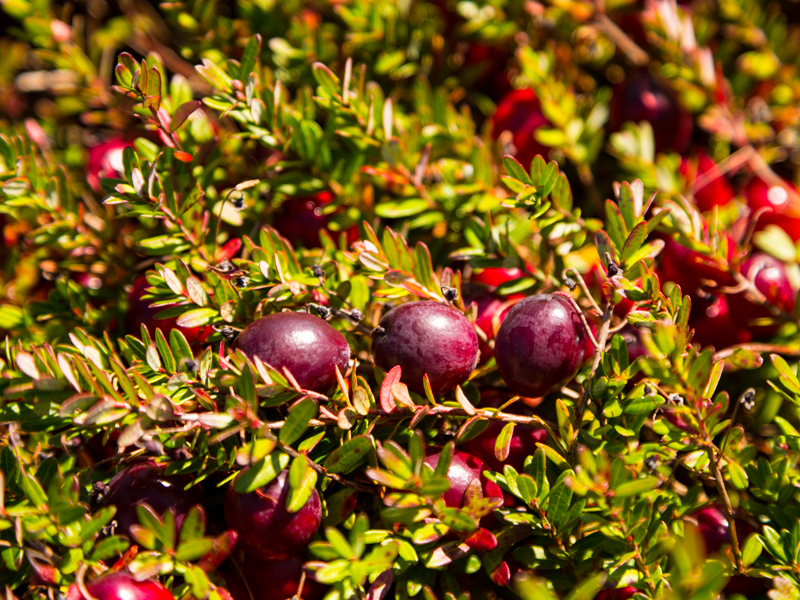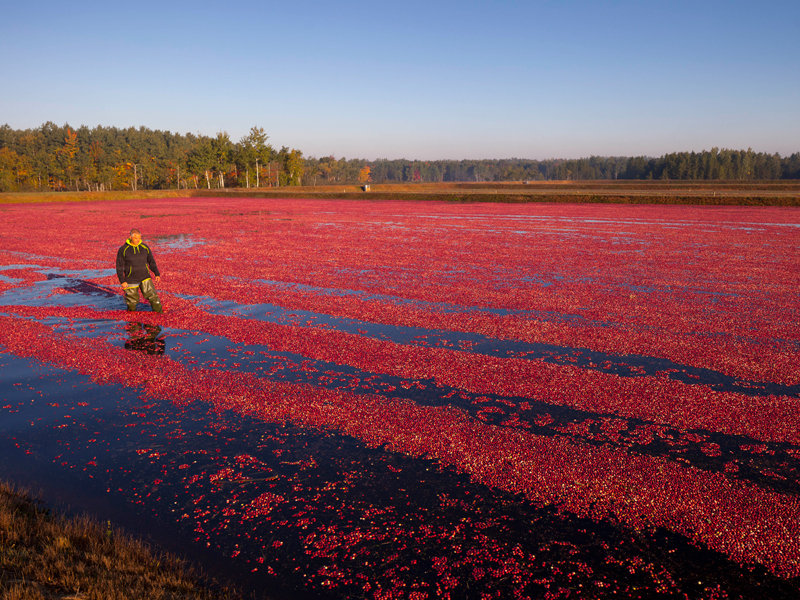Today, as you watch that ribbed cylinder of canned cranberry sauce do its little dance in the serving dish or – if you’re lucky enough – eat a delicious homemade cranberry dish, consider that the lovely little gem is an important Wisconsin crop.
Here are some facts – informative, healthful and fun – from the Wisconsin State Cranberry Growers Association.

- In 2015, Wisconsin is expected to produce 5 million barrels of cranberries, representing nearly 60 percent of the nation’s crop and securing Wisconsin as the No. 1 cranberry producer in the United States for the 21st consecutive year.
- Cranberry exports have increased from less than 10 percent of Wisconsin’s crop to nearly 33 percent just over the past decade.
- More than 250 growers produce cranberries on approximately 21,000 acres of land throughout 20 counties in central and northern Wisconsin.
- Cranberries are Wisconsin’s largest fruit industry in both value and size.
- The cranberry was declared Wisconsin’s official state fruit in 2004.
- Cranberries are ingredients in more than 1,000 food and beverage products on the market, and only 5 percent of Wisconsin’s cranberry crop is sold as fresh berries.
- A recent study conducted by the University of California-Davis found Wisconsin’s cranberry industry has a value just shy of a $1 billion and is responsible for nearly 4,000 jobs.
- Contrary to popular belief, cranberries do not grow in water. A perennial plant, cranberries grow on low running vines in sandy bogs and marshes. Because cranberries float, Wisconsin marshes are flooded when the fruit is ready for harvesting.
- Cranberries were originally stored and shipped in wooden barrels weighing 100 pounds each. They aren’t shipped in wood barrels anymore, but the 100 pound "barrel" standard is still used today.
- Europeans named the fruit "crane berry" because they thought the cranberry blossom looked like the head of a sandhill crane.
- Cranberries score among the highest of all fruits in antioxidants. Diets including fruits and vegetables with high antioxidant values, like cranberries, may help support memory function and coordination.
- Cranberries are a cholesterol free, fat free and low sodium food, and help maintain a healthy heart.
- Cranberries are part of a healthy diet and contain antioxidants that may help maintain a healthy immune system.
- As part of a healthy diet, cranberries can be added to low-fat vinaigrettes, whole grain pancakes and yogurt.




.jpeg)



